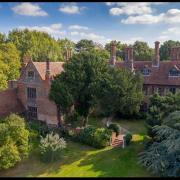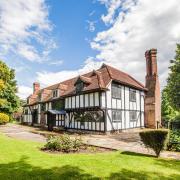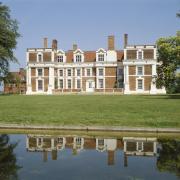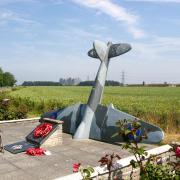By Andrew Millham
Set amongst the coast and countryside of Victorian Essex, Sarah Perry’s bestselling novel, The Essex Serpent, is set to slither onto our TV screens on May 13, 2022. Here, Andrew Millham explores the filming locations, actors due to star in this adaptation and the secrets to be uncovered from the marshy inlets of the River Blackwater
The River Blackwater. Its murky silt-laden depths rise out of the Chelmer and through the tidal sea lock at Heybridge Basin. Waters bow around the ancient islands of Northey and Osea, past the patchwork fields behind Goldhanger and then flow by the salt marshlands of Tollesbury – the town of plough and sail. A rusty-green saturated landscape, intruded by soft creeks that twist left and right and back on themselves to form a tessellating brain-like structure. Shells of wooden skiffs, ribbed like the wild oysters adorning the riverbed, fade back into the anoxic depths a little more every day, flanked by coppery reed beds. Tracking northwards, Mersea is cleaved from the mainland by a strand of shallow water before each tributary conflates to join the North Sea. Quite the journey.
Where better to set a mysterious Gothic-style novel? This is exactly what Chelmsford-born Sarah Perry did with her 2016 book of the year The Essex Serpent. Set in 1893, deep in the heart of the Victorian era, the tale follows Cora Seaborne, our determined protagonist, from the trappings of London’s high society to the fictional Essex town of Aldwinter after the death of her abusive husband. Cora pursues her interest in palaeontology, with scientific undertones weaved throughout the prose. The curious Victorian desire to categorise, label and document the natural world is accurately portrayed, with the pages transformed into mahogany museum cabinets, and the words to ammonites, crinoids and all manner of specimen treasures within.

A ruin in Colchester, caused by an earthquake, first draws Cora to the area. Perry loosely bases details like this around actual historical events, giving the text an earthy realness. In 1884, a Colchester earthquake (known as the Great English Earthquake) did cause considerable damage to more than 1,200 buildings around Wivenhoe and Abberton. In the book, the shaking ground is rumoured to have awakened a mythical sea dragon – the Blackwater Beast, a deadly Essex Serpent – with members of the community disappearing from the dark and lonely riverbanks. In the sleepy town of Aldwinter, unnerved by such rumours, Cora becomes acquainted with Reverend Will Ransome and his family, a no-nonsense trusted leader of the community who is irritated by seemingly spurious tales of river monsters. Cora believes that the serpent exists, Will does not – their clash of opinions only draws them closer to one another.
You will have to read the book to find out what happens… or maybe not, because The Essex Serpent is set to hit our television screens next year via Apple TV+. Some big names are set to star in the adaptation, with Keira Knightley originally announced to be playing the role of Cora. She later dropped out of the project due to ‘family reasons’. American actress Claire Danes, four-time Golden Globe winner, will now helm the six-part drama series. Alongside her will be Hollywood actor Tom Hiddleston playing the role of Revd. Will Ransome, bringing to this role the required intensity, mixed with gentle compassion, that he has shown in other series like The Night Manager.

Filming has taken place in a number of locations around Essex. Various parts of Maldon will form the village of Aldwinter. Having visited Hythe Quay all my life, the oxblood sails of Thames sailing barges like Pudge, Hydrogen and Centaur are the ideal backdrop for this period drama – adding a layer of honesty and aged authenticity to what is otherwise a manufactured set. With skippers, mates and third hands trained up by the Thames Barge Trust, these historic vessels still venture out for the annual barge matches, creating nautical sights from the shore unchanged since the Victorian era and earlier.
Passing a large marquee in Promenade Park, I walked along the waterside at Maldon during the filming and stumbled quite unintentionally across the set. There were large trucks with props inside, and vast piles of suitcases, coopered barrels, and thick coiled ropes beside wooden handcarts in front of the boats – it was a sight to behold. I had no idea what they were filming at the time. My visit was to The Barge Tearoom on board SB Resourceful, a fantastic spot for lunch, although I doubt this would have been available to the inhabitants of Aldwinter!
Alresford Creek is another timeless spot where filming has taken place. The low-lying mudflats make way for atmospheric mists and burnt orange sunsets. Tom Hiddleston, famed for his appearances in various Marvel films, was spotted with a film crew in Brightlingsea, facing the creek. He was standing, in character, behind scattered wooden rowing boats, with the iconic white-washed, clapperboard cottage behind – its red tiled roof drooping with age. Pictures have also emerged of the actors on Mersea, donning Victorian dresses, with Hanes wearing a high-necked grey velvet dress. Hiddleston was pictured in Tollesbury Saltings walking dramatically through smoke, sporting fake blood on his cheek. By the looks of things, Perry’s imagined world is in safe hands.

I am well-acquainted with the area, often driving through Maldon, Heybridge and Tollesbury D’Arcy for various dealings with Essex Wildlife Trust at Abbotts Hall Farm. In September, I was visiting for a fortnight-long Forest School leadership course. On the first day, we were told to pick our ‘nature spot’ – anywhere within the woodland to sit for two minutes and admire the beauty of nature. In a world of colour, I chose a spot with a view across the Salcott Channel, over Old Hall Marshes and all the way to the red lightship at Tollesbury Wick (a Site of Special Scientific Interest [SSSI] for its diverse ecosystem). It was the most relaxing part of my day.
The late-summer sun danced off of the quartzy silt, which had flocculated in the channel. Poplar leaves rustled loudly – a column of compound noise standing almost as high as the lark in flight – whilst English ivy mimicked luffing sails in the distant estuary, catching passing squalls. I returned to that spot every morning, developing an indescribable connection with the coastal scenery. There is a mystery to the place, a sense of space and palpable history, with the landscape largely unchanged since the Iron Age and Roman periods when the marshes were part of a thriving salt-production industry. What long-forgotten secrets lay beneath the mud? What creatures dwell within the water? Perry’s writing takes us a step closer to finding out.
During my English Literature A-Level, I choose to study the novel for one of my assessments – I did not think at the time that I would get to watch an adaptation. It was so refreshing to read about the Essex landscape. Places that I have frequented since childhood sprung off the pages and this familiarity made it far easier for me to picture the scenes in my head, making for a vibrant read. An understanding and appreciation for the county’s wildlife shines through, with the unrealistic ideals of a bucolic life beyond London overshadowed by real elements of our county’s countryside that are sometimes taken for granted – like our extensive salt marshland. Perhaps this new series will help us Essex folk to realise quite how lucky we are to be surrounded by such varied coast and countryside.
Like the River Blackwater’s difficult journey to the North Sea, the lives of Perry’s windblown characters are far from straight forward. Both Cora and Will let nature do the talking, conversing with each other not with words, but through the clouds overhead and ‘the downspin of a sycamore key’. We too should open our eyes to the wonders of the Essex landscape, serpents and all. It is larger than us, in every sense, carved out and laid down to the patient tick of geological time; hard won, easily lost – we must endeavour to protect it. Nothing beats the noisy honking of brent geese, fluttering clouded yellow butterflies and the iridescent purple-green of lapwings flying into roost. Except, perhaps, for the cutting silence of an Essex marsh, interrupted only by the rhythmic lapping of brackish water across an estuarine shore.
When is The Essex Serpent on TV? Friday 13 May 2022
Where can I watch The Essex Serpent? Apple TV+




























